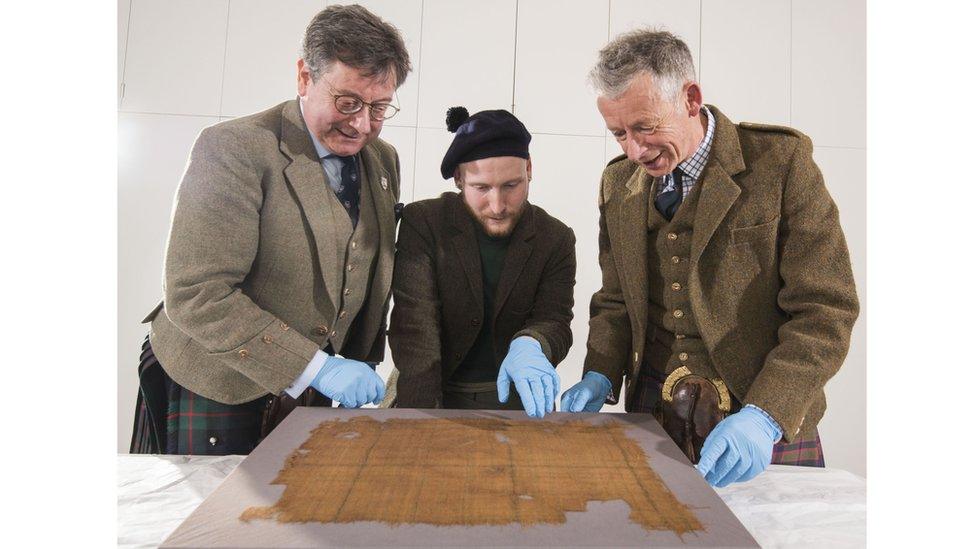Scotland's oldest tartan found in Glen Affric bog in Highlands
- Published
- comments

John McLeish (left) and Peter MacDonald (right), head of research and collections, of The Scottish Tartans Authority, brought the tartan to curator James Wylie (middle) to be exhibited at V&A Dundee.
A piece of fabric found in a peat bog in the Scottish Highlands is thought to be the oldest traditional tartan ever found.
Researchers say the delicate material could be up to 500 years old.
The piece of fabric was unearthed in Glen Affric around 40 years ago and was naturally preserved in the peat due to the lack of air getting to it.
After the fabric was carefully examined, washed and tested, the team of scientists from National Museums Scotland said it had initially been made up of four colours: green and brown and possibly red and yellow.
Oldest tartan in the world
They found no evidence of man-made dyes in the tartan, suggesting the fabric was older than they initially thought.
Experts have said the tartan was more than likely worn as an "outdoor working garment" and would not have been worn by royalty.
"The Glen Affric tartan is clearly a piece of national and historical significance" said Peter MacDonald, head of research and collections at the Scottish Tartans Authority.
"It is likely to date to the reign of James V, Mary Queen of Scots, or James VI", who was also known as James I of England.
What is tartan?
Tartan is seen on traditional Scottish clothing, such as kilts.
What is tartan and what does different tartan mean?
Tartan is a special type of checked woollen fabric with great historic importance to Scotland - the first mention of tartan was in 1538.
It is made up of horizontal and vertical stripes in different colours, on a coloured background. The interwoven stripes are known as a sett.
Tartan can be used to make kilts, or scarves, and they come in many different colours and designs, to represent different clans, or families.
Originally, clanspeople used local plants, mosses and berries to dye the wool.
The historic piece of cloth will go on display at V&A Dundee next month.
Peter MacDonald, head of research and collections at the Scottish Tartans Authority, said: "The testing process has taken nearly six months but the effort was well worth it and we are thrilled with the results".
